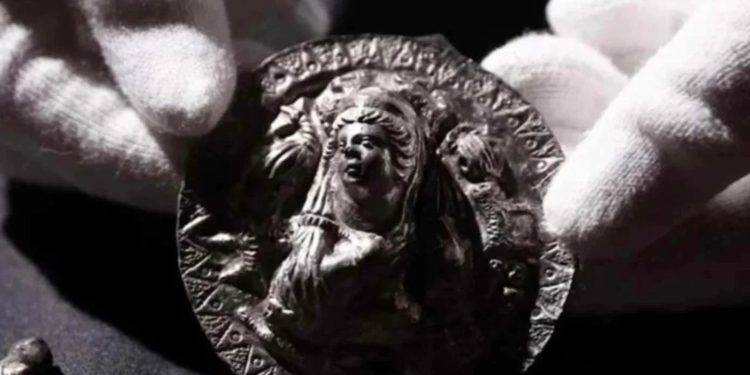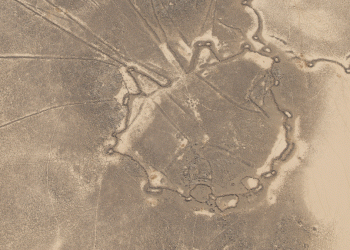The medallion depicts ten of the twelve known signs of the zodiac. Curiously, Aquarius and Libra are missing. This, according to experts, provides a window into religious practices at its creation 2,100 years ago. According to archaeologists, the discovery suggests the woman was a priestess of Aphrodite, the goddess of love and beauty. These conclusions were based on grave goods such as rings and silver earrings. However, the grave contained other grave goods dedicated to the goddess. This tomb is among a series of significant discoveries made this summer near the Taman Peninsula in southern Russia. It is located between the Black Sea and the Sea of Azov.
Fanagoria archaeological expedition
The woman’s grave was found during the 2022 summer season of the Fanagoria archaeological expedition by archaeologists Nikolay Sudarev and Mikhail Treister, according to Volnoe Delo Foundation spokesman Ruben Bunyatyan. Phanagoria was founded in the 6th century BC, according to the Greek historian Hecataeus of Miletus. It was founded by refugees from Teos, a Greek city on the Anatolian coast that is now part of Turkey. In spite of the fact that two signs are missing, the inclusion of the zodiac indicates that the medallion is a representation of “Aphrodite Urania,” her heavenly manifestation, as opposed to her earthly manifestation, “Aphrodite Pandemos.” A widespread belief in astrology, that the positions of heavenly bodies can affect events on Earth, can also be seen in its existence throughout ancient times.
Iconographic representations of Aphrodite
The silver medallion found in the tomb measures about 7 centimeters in diameter and 15 millimeters thick. Using other contemporary iconographic representations of Aphrodite, the relief shows her head, shoulders, and hands. In the Bosporus Kingdom, medallions like these were common 2,300 years ago, according to Maria Chashuk, principal researcher of the Fanagoria archaeological expedition. They could be worn as brooches, headwear, and pendants, among others.” The Black Sea site also revealed the tomb of an Iranian warrior with a sword manufactured in early medieval Iran, in the Sassanid style, the second Persian Empire.
Numerous items
The object may have been taken as a military trophy or given as a diplomatic gift. The Volnoe Delo Foundation writes that this sword was part of the equipment of horsemen during the Great Migration. This was a time when much of Europe and western Asia were threatened by invasion by peoples of Central Asia, such as the Huns. Researchers said the unique find shows Phanagoria had close cultural and political ties to the Sassanian empire by the mid-first millennium. It reflects late-antique warrior tastes on the Taman Peninsula. Furthermore, a ceramic jar, beads, a brass mirror, and iron scissors were found in the tomb of the warrior, as well as horse harness parts, buckles, belt spikes, glass jars, wooden utensils, and wooden boxes.
Have something to add? Visit Curiosmos on Facebook. Join the discussion in our mobile Telegram group.











